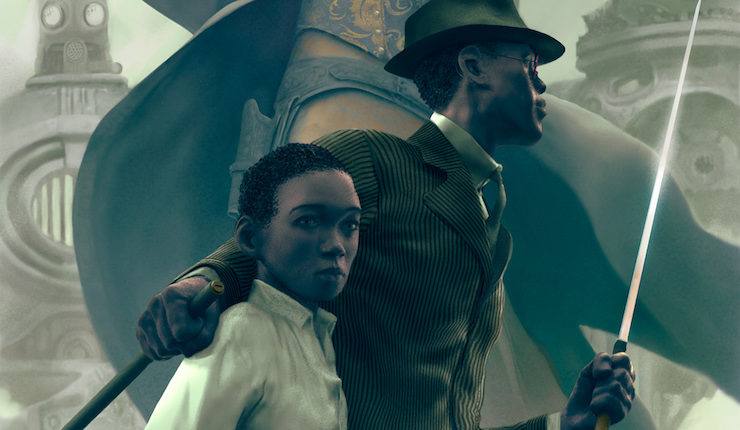One of the things I’m passionate about is community development. In trying to figure out how to do this using writing, I became a part of an arts collective called The Learning Tree. We’re a group of organized neighbors that specializes in Asset Based Community Development (ABCD). We identify and invest in the individuals, organizations, and the community to see and celebrate the abundance in our neighborhood. Simply put, our neighbors are our business partners.
The community I work in, like other communities, is rich with gifted talented individuals who care about each other and their community but don’t have financial stability. The problem is that poor people aren’t being seen. There is a misrepresentation of poor people, in terms of who they are and what their capacity is to effect change within their communities. The dominant narrative about poor people or neighborhoods is that they are impoverished, broken, and filled with needs. Most stories of the poor focus on their economic and personal failures. Stories define a people. Stories reflect a people. Stories shape our perception, from the news to media to politics. The thing about stories, to paraphrase Neil Gaiman, is that it’s easy to let a bad one in you. Once labeled, it’s a constant battle not to live into that label.
Inspired by the book Portfolios of the Poor: How the World’s Poor Live on $2 a Day (by Stuart Rutherford, Jonathan Morduch, and Daryl Collins), I was hired on as the staff writer to help collect the stories of our neighbors. Our thinking is that people in the neighborhood need to see themselves, their potential, their gifts, their talents, something to show the best of themselves. And there’s no better mirror than story. We pay attention to people’s gifts, seeing them as cultural, social, and productive assets within the community rather than consigning them to economic exile. As a part of getting to know our neighbors, I write profiles emphasizing their social capital, their skills, talents, and passions; their ability to fix things, trade goods, grow things. I write about how they commercialize their hobbies, invent, produce art, produce music, educate, and care for one another.
Where the system falls short, poor people slip through society’s cracks. We measure our neighborhood’s economic vitality and map their assets. We discover the informal economy outside of the consumer one. As we know people’s social capital, continue to build trust and cooperation, we organize. So what does this look like in action?
One day a group of neighbors from our community stumbled upon 25 doors dumped in an alley. This was a perfect metaphor of how our neighborhood was seen from the outside: someone in the city decided we were no longer useful or had any value so we’d been discarded and left to be forgotten. One of our artist neighbors came up with the idea to have the artists in our neighborhood—we had come to know over two dozen—paint their stories. As word got out, people started donating doors to us. We have about 70 painted doors which have been a part of several exhibits and are now traveling around the country.
It’s not just art for art’s sake, but rather using art to bring economic development for our neighborhood residents. We want to build their financial portfolio through employment and vocational opportunities. Through grants and investments, we pay our artists. We hire folks the system chews up and spits out, for example, formerly incarcerated young men to curate our art galleries. So for us, art is about survival.
Art brings people together. From music to story, narratives are important. Narratives shape. Narratives build capacity. Narratives are educational, with people learning from one another. This year we want to explore using story even more with a project we’re calling Sawubona 46208 (“Sawubona” is a Zulu greeting meaning “I see you”). We will take the stories of some of our neighbors, create short plays and monologues, and stage those stories on the porches of abandoned houses and street corners to reclaim those spaces (and quietly highlight the issue of gentrification in our community). Stories of the history and legacy of segregation in the city. Stories of the experiences with the criminal justice system. Stories of struggle, survival, and hope. We will film the productions to eventually create a documentary on the story of our neighborhood.
We’ve already assembled our Design Team—hip hop artists, actresses/actors, poets, visual artists, videographers, musicians—all from within the community. Each were artists out in the community largely doing their own thing. We thought it important for us to see and get to know one another. To see what sort of resources we had within the community so that we can support what each other s doing. And to show each of us that we weren’t out there alone anymore.
For a long time I struggled with the notion that “I’m only a writer, what can I do?” and, if I’m completely honest, used it as an excuse to do nothing. Art lifts community. Story creates identity. If we don’t control our own narratives, others certainly will. Our communities are more self-sufficient, more capable, than the dominant narrative wants to portray. Through art, through writing, we can catalog the positive things happening in our neighborhoods, we can make the invisible visible, and be the change we want to see. Through art, we resist.
 Maurice Broaddus is the author of the urban fantasy trilogy The Knights of Breton Court. Some of his stories have been collected in The Voices of Martyrs, out now from Rosarium Publishing, and he has a novella, Buffalo Soldier, available now from Tor.com Publishing.
Maurice Broaddus is the author of the urban fantasy trilogy The Knights of Breton Court. Some of his stories have been collected in The Voices of Martyrs, out now from Rosarium Publishing, and he has a novella, Buffalo Soldier, available now from Tor.com Publishing.










